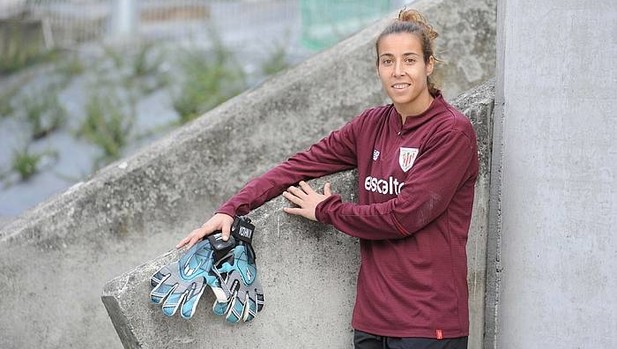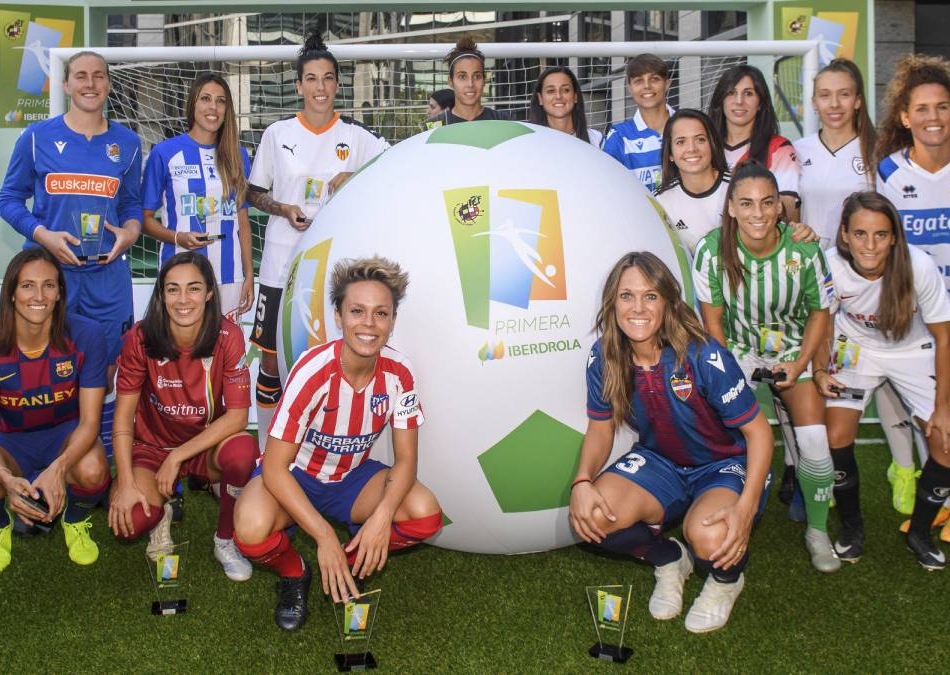 By Euan Mctear
By Euan Mctear
“We believe this is women’s football’s moment and we have to fight for our colleagues. We have to work for the others, not just for us. We can’t be inactive and not fight for our rights.” These were the words of , a goalkeeper for Athletic Club’s women’s football team who has taken on the role as a spokesperson during tense times for Spanish women’s football, tense times that have led to strike action.
Following the latest meeting on the issue, held on Monday October 28th, the failure to reach an agreement left strike action as the next step. Due to laws regarding the amount of notice that has to be given and due to an international break in women’s football at the beginning of November, the round of action where the “indefinite” strike action will begin will be that of the ninth round of the Primera Iberdrola, the top tier of Spanish women’s football, which will be held on the weekend of November 16th and 17th.
Players are demanding that part-time contracts be worth 75% of the full-time ones, meaning that the lowest possible annual salary a player can be offered would be €12,000.
So, how did we get here? How has it reached the point of strike action?
The current dispute is over negotiations for a collective agreement with the clubs, negotiations that began on October 4th, 2018, even though the players had been calling for talks to begin several months previously. The negotiations have now been going on for over a year and no resolution has been reached between the Asociación de Clubes de Fútbol Femenino (ACFF) – the Association of Women’s Football Clubs, in English, which is the organisation that represents all of the top-flight clubs in the Primera Iberdrola except for Barcelona, Athletic Club and CD Tacón – and the UGT, Futbolistas ON and AFE unions.

The demand from the unions is for a minimum salary of €16,000 a year, even if €20.000 was also mentioned, but complications have arisen over part-time contracts. They’re demanding that part-time contracts be worth 75% of the full-time ones, meaning that the lowest possible annual salary a player can be offered would be €12,000. The clubs, however, have been insisting on having part-time contracts at 50% of the full-time ones, meaning the minimum salary for these kinds of part-time contracts would be €8,000. This has been the biggest stumbling block. “We are footballers 24 hours per day,” Tirapu stressed, when discussing the issue of part-time arrangements.
Considering that the Spanish minimum full-time wage is €12,600, the players believe their requests are more than fair. As Tirapu said in an interview with EFE: “I don’t understand that they say it’s unviable. We’re not asking for much more than the minimum wage. We’re not asking for anything that any other employee today in this country doesn’t have. It’s not an exorbitant request.”
It’s not just about pay, though. As Tirapu explained, these figures and percentages all have an impact on people’s ability to access the welfare system later in life. In that same EFE interview, she went on to explain the following: “It may seem that the topic of worker contributions isn’t an important thing, but it affects many things. Perhaps after dedicating a year to football you think you’ll have the right to benefits, but when you stop playing in June time they could tell you that you don’t have the right to this because you’ve not contributed enough. These situations happen.”
The failure to reach an agreement on these issues is what led 93% of women footballers in Spain to vote for strike action.

It’s a shame that it has reached this point in a year that has been so positive for women’s football. The Women’s World Cup in France was a major success and broke so many records, with the average live match audience more than doubling from the 2015 edition to a total viewership of 1.12 billion viewers or with developments such as Visa pledging to spend the same amount on marketing the Women’s World Cup as it had for the men’s edition in Russia the previous summer.
In Spain, the 2019/20 season was billed as ‘The Big Year for Women’s Football’, with the Spanish league looking to build on the 37% growth in TV viewership between 2017/18 and 2018/19 and the huge attendances registered last season, such as the 23,812 for Real Betis vs Sevilla, the 24,986 for Athletic Club vs Levante and the 60,739 for the top-of-the-table clash between Atlético Madrid and Barcelona at the Wanda Metropolitano.
“Three years ago it was very common to consider women’s football like a social responsibility activity in some clubs, but now I think that we can talk about profitability of women’s football,” Elche CF’s director general Patricia Rodríguez said of the evolution as she moderated a panel titled ‘Women’s Football: What’s Next After The Game Changing FIFA WWC?’ at the 2019 World Football Summit in Madrid. She added: “The 2019 FIFA Women’s World Cup proved not only the top-quality football that women can produce, but also the enormous business potential with record-breaking media coverage. There is no stopping the women’s game.”
Despite such optimism at the start of the 2019/20 season, it seems there is going to be a stoppage in the women’s game. Strike action is coming.

